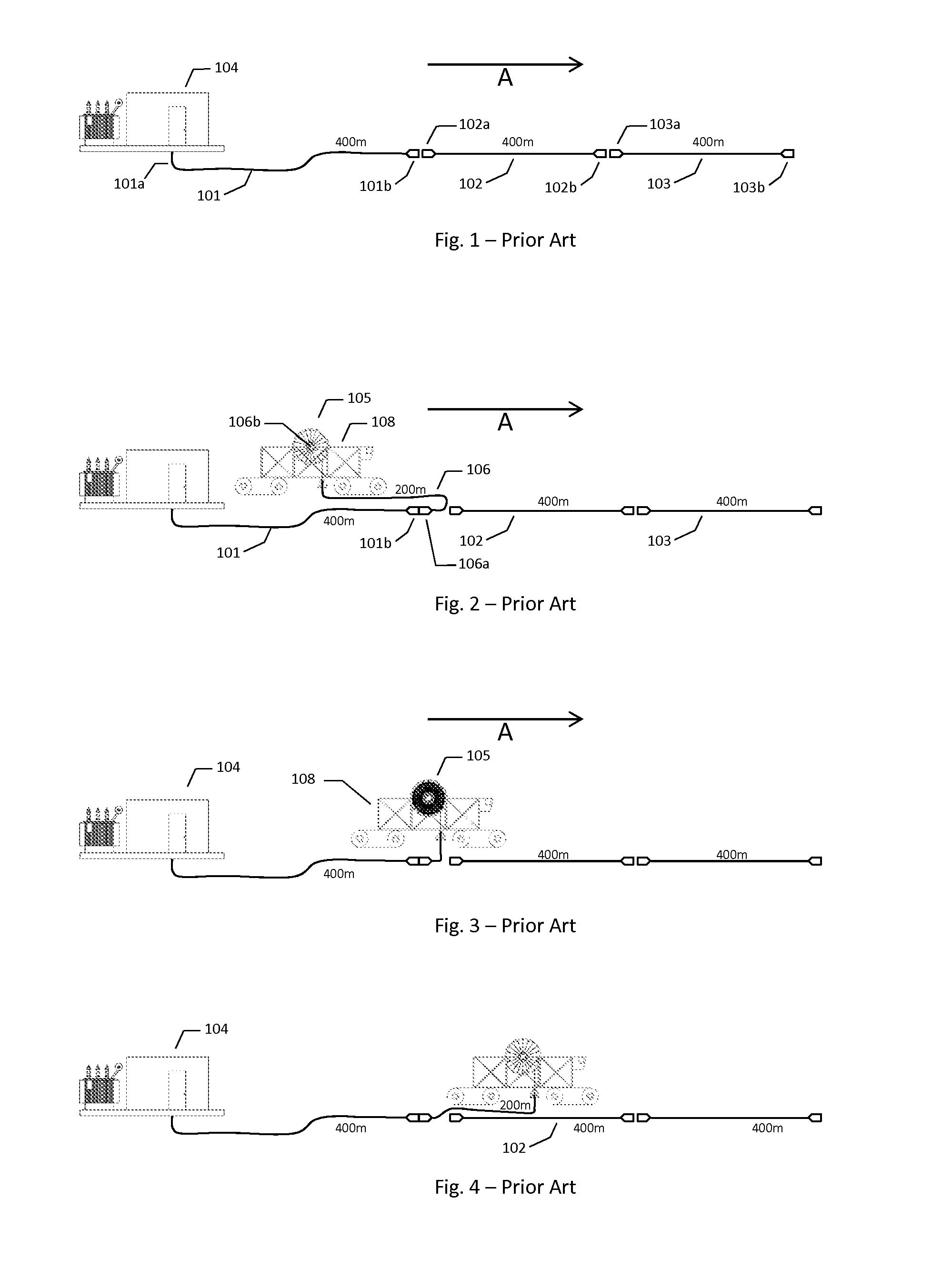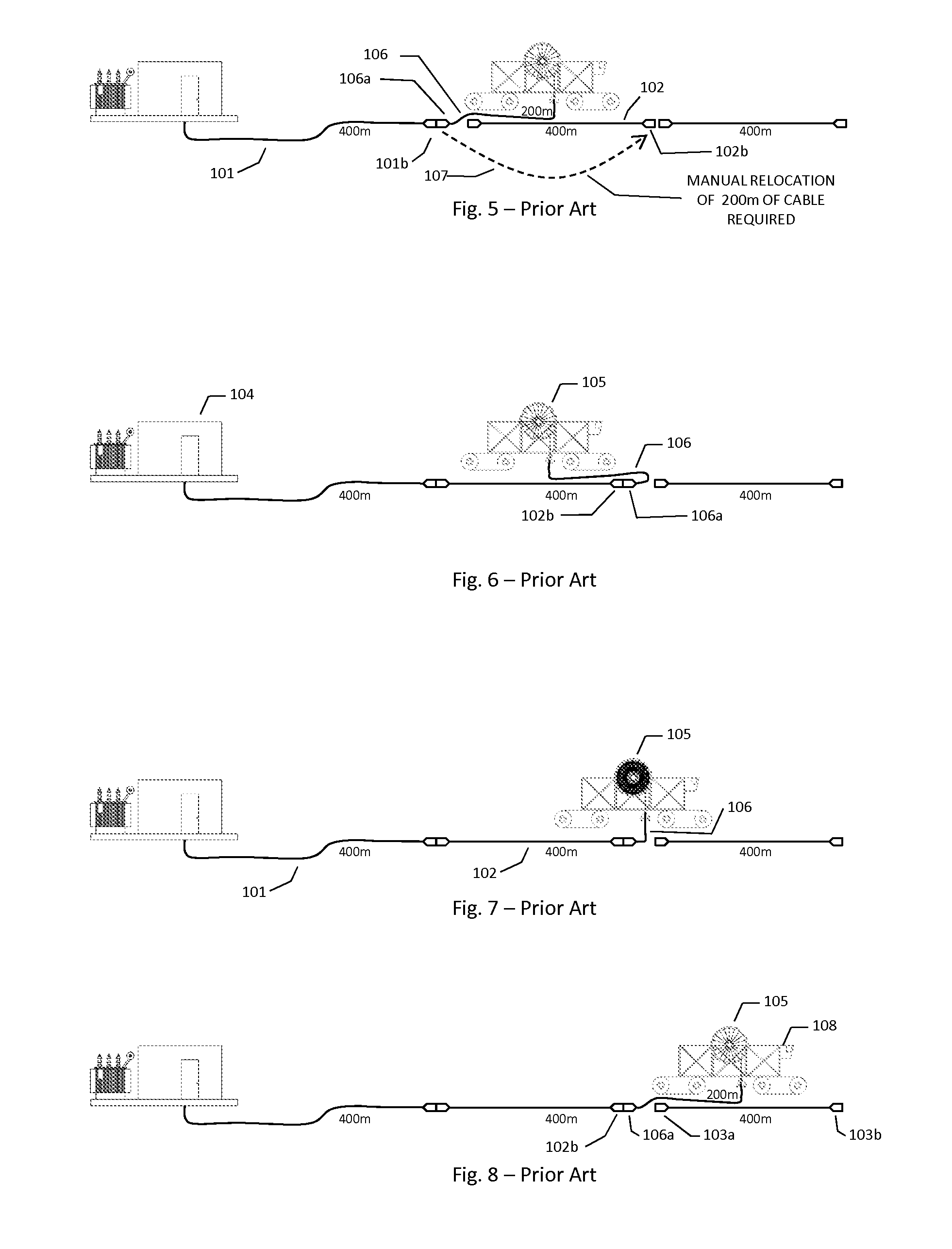Method of powering mobile equipment
- Summary
- Abstract
- Description
- Claims
- Application Information
AI Technical Summary
Benefits of technology
Problems solved by technology
Method used
Image
Examples
Embodiment Construction
[0021]FIG. 1 depicts a prior art layout of cables prior to the movement of the mobile conveyor. Individual cables 101, 102 and 103, each 400m in length, are laid out in combination parallel to the path that the conveyor will move, which is in the direction of arrow A. Cable 101 has on one end 101a, which in the depicted view is the left end, an electrical connector or plug (not shown) that is wired into the electric house 104 which provides electrical power to the cable. On cable 101's other, i.e. right, end there is electrical plug 101b. Cables 102 and 103 each have an electrical plug, respectively 102a and 103a on each cable's left end that is located closer to electric house 104 and a plug, respectively 102b and 103b, on each cable's opposite, i.e. right, end that is located further from electric house 104.
[0022]FIG. 2 is the first in a sequence showing the procedure, according to one prior art method, for powering a mobile conveyor as it traverses a path in a mining environment ...
PUM
| Property | Measurement | Unit |
|---|---|---|
| Power | aaaaa | aaaaa |
Abstract
Description
Claims
Application Information
 Login to View More
Login to View More - R&D
- Intellectual Property
- Life Sciences
- Materials
- Tech Scout
- Unparalleled Data Quality
- Higher Quality Content
- 60% Fewer Hallucinations
Browse by: Latest US Patents, China's latest patents, Technical Efficacy Thesaurus, Application Domain, Technology Topic, Popular Technical Reports.
© 2025 PatSnap. All rights reserved.Legal|Privacy policy|Modern Slavery Act Transparency Statement|Sitemap|About US| Contact US: help@patsnap.com



